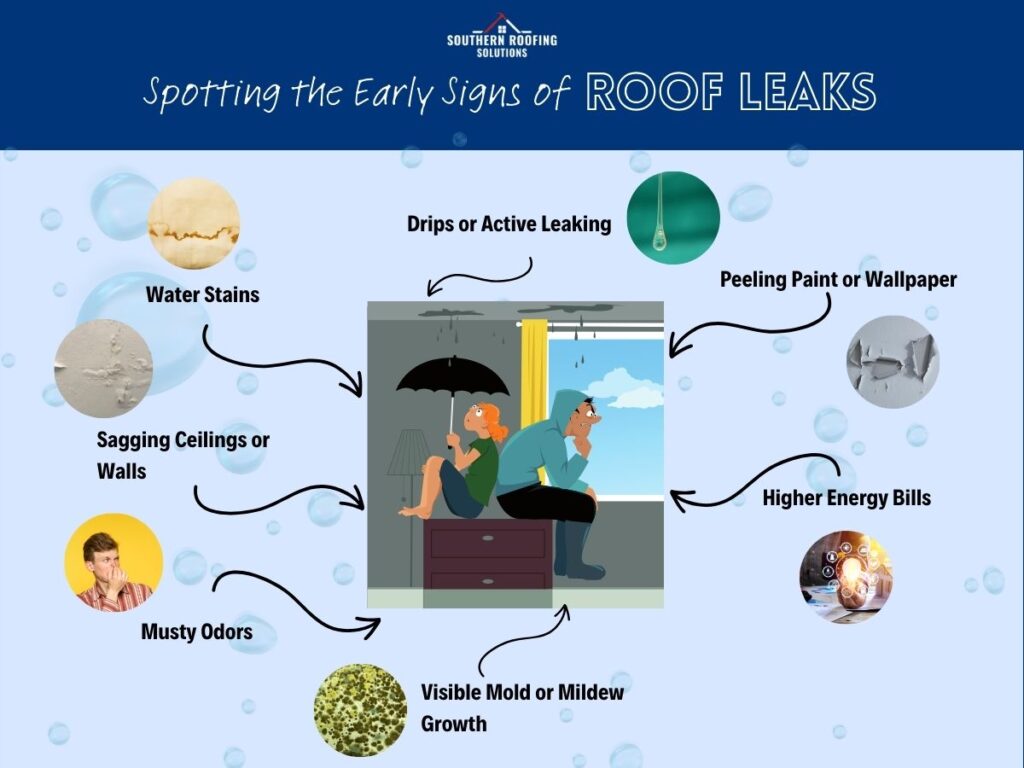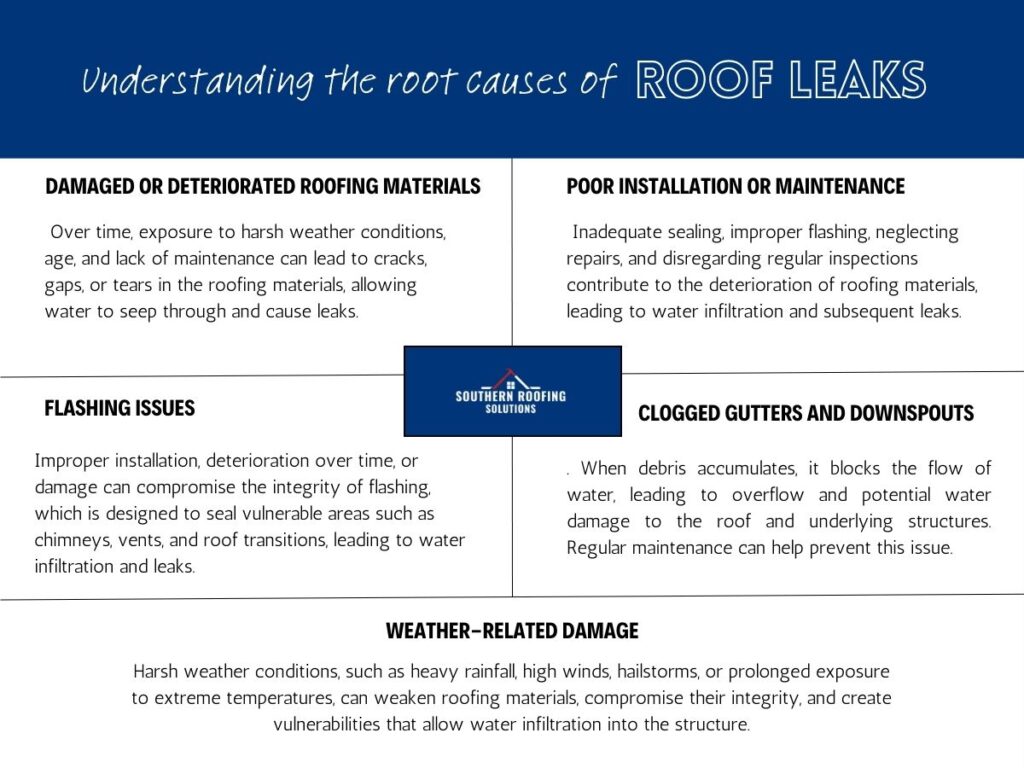Roofs are the first line of defense against the harsh forces of nature, keeping us safe, warm, and dry. However, this constant exposure to the elements can lead to wear and tear over time, often manifesting in the form of roof leaks, so spotting the early signs of roof leaks is important.
Recognizing the early signs of roof leaks can help homeowners address problems before they escalate, saving time, effort, and money. This article will guide you through the critical signs of roof leaks, providing practical advice on spotting and managing them early on.
Spotting signs of roof leaks is crucial because even small leaks can silently develop and cause significant damage over time. A seemingly insignificant drip or wet spot could indicate a more extensive underlying issue.
Roof leaks can harm your home's structure, damage insulation, trigger mold, and mildew growth, and pose health risks. Promptly addressing leaks prevents further damage, including weakened support beams, wood rot, and insulation damage, while minimizing the potential for costly repairs.
Identifying leaks preserves the integrity and lifespan of your roof, as continuous water exposure can prematurely age and weaken roofing materials. Regular inspections allow for prompt vulnerability identification and maintenance, ensuring your roof remains in good condition and protects your home from the elements, ultimately maintaining your property's value.

Before delving into the signs of roof leaks, it's essential to understand the potential causes. The primary instigators of roof leaks include:
By understanding these common causes of roof leaks, homeowners can take proactive measures to address vulnerabilities, conduct regular inspections and maintenance, and ensure their roofs are well-maintained and watertight.
Early detection of roof leaks requires vigilance and regular inspection. Here are some early warning signs to watch for and their possible effects:

One of the most apparent signs of a roof leak is a water stain on your ceiling or walls. These stains may appear as dark or damp spots, or they might have a brown or yellow ring around them, often looking like a spreading blot.
If left untreated, these stains may grow and begin to bubble or peel, indicating extensive damage beneath the surface. Over time, a persistent roof leak can even cause structural damage to your home, including wood decay, mold growth, and weakened support beams.
An active drip, though obvious, is often ignored until the problem becomes more significant. If you notice any consistent wet spots or drips, it's time to investigate. Ignoring an active drip can result in long-term problems that could impact your home's overall structure and your health. Not only can a persistent leak lead to structural damage, but it can also promote the growth of harmful mold and mildew.
If the paint or wallpaper on your walls is peeling or blistering, there might be moisture seeping in from a leaky roof. The presence of moisture seeping in from a leaky roof can damage the aesthetic appeal and integrity of your home's interior finishes.
It can lead to the degradation of paint and wallpaper, causing them to peel or blister. Not only does this impair the aesthetic quality of your home, but it also reveals the potentially extensive water damage hiding behind these surfaces.
The presence of a persistent musty smell, especially in enclosed spaces like an attic or upper floor, can be a strong indicator of an undetected roof leak. The trapped moisture from the leak can foster the growth of mold or mildew, which often emanates such odors.
These growths not only harm your health, causing respiratory issues and allergic reactions, but also signal prolonged water exposure that could have already caused substantial damage to your home's structural integrity.
The visible presence of mold or mildew on ceilings, walls, or in the attic is a clear indication of a moisture problem, likely stemming from a roof leak. These fungi thrive in damp environments, and their appearance can signal persistent water intrusion.
Beyond the health risks they pose, such as triggering allergies and respiratory issues, their presence also points to potential structural damage. If left unchecked, this moisture-induced decay can weaken your home's infrastructure, necessitating significant repair work.
A sagging ceiling or wall is a severe sign of prolonged water damage, often the result of an unattended roof leak. This symptom represents a critical stage where the accumulated moisture has so severely compromised the structural integrity that the affected areas can no longer support their weight.
Such a situation warrants immediate attention. If not addressed promptly, it can lead to catastrophic structural failures, posing a significant safety risk and requiring extensive, costly repairs.
An unexplained surge in your energy bill may also be a subtle sign of a roof leak. This occurs because leaks can dampen your home's insulation, reducing its effectiveness. As a result, your heating or cooling system has to work harder to maintain a comfortable indoor temperature, leading to increased energy consumption.
Over time, this not only leads to higher utility costs but could also shorten the lifespan of your HVAC system due to the extra load, adding another layer of potential expense.
Early detection of roof leaks largely depends on regular maintenance and inspections. Here are some preventive measures you can take:
The early detection of roof leaks can save homeowners a great deal of money, time, and stress. By understanding the causes and signs of roof leaks and by taking preventive measures, you can maintain the longevity of your roof and ensure the safety of your home.
Any identified leaks should be addressed promptly by professionals to avoid exacerbating the damage. Remember, when it comes to roof leaks, an ounce of prevention is worth a pound of cure. However, deciding whether to repair or replace your roof after leak damage can be challenging, as it involves assessing the extent of damage, the age of your roof, and the costs involved.
If you are in this situation, read our guide on How To Know If I Should Repair Or Replace My Roof?